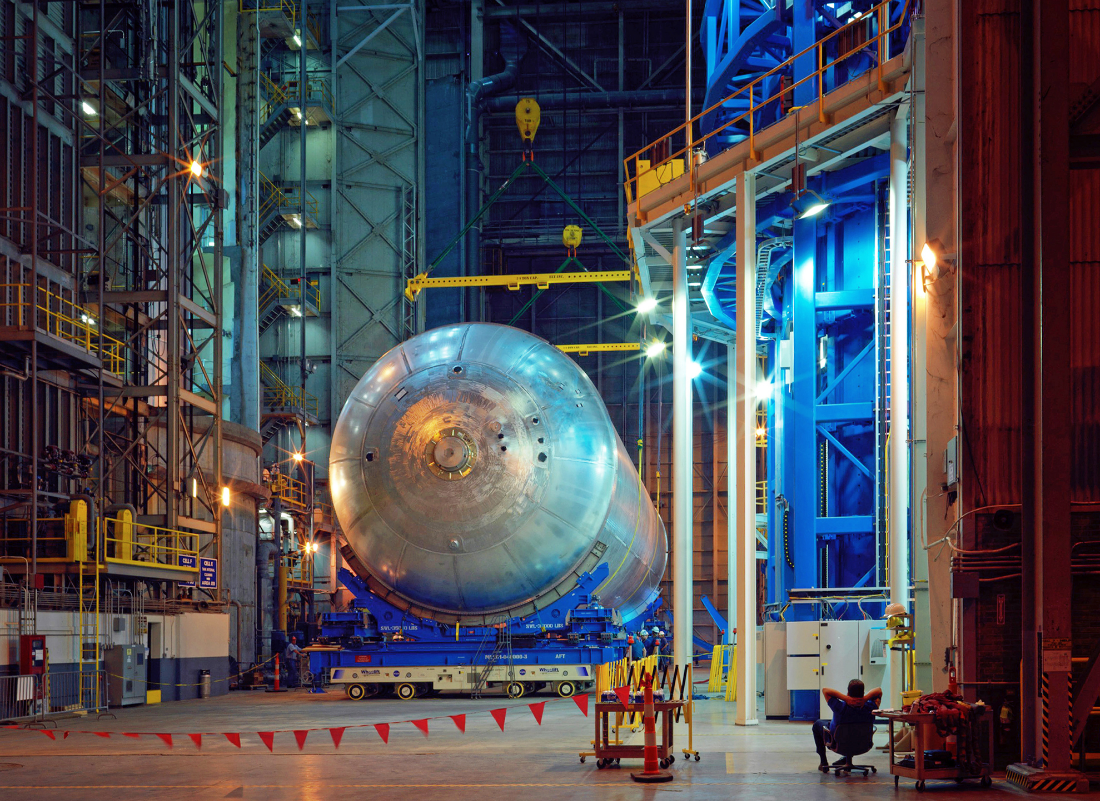By Jean-Jacques DeLisle, contributing writer
Rocket engines with 8 million pounds of force and a 537,000-gallon liquid hydrogen fuel tank can not only take you to the stars but can bring you back to Earth at mind-boggling speeds. The Space Launch System is the most powerful rocket ever built, and NASA is planning to send a crew whistling around the moon and back in early 2020. Though this may sound like a NASA-grade joyride, it’s a necessary step in developing manned rocket systems that can send a team to asteroids and other planets.
The plan for the Orion capsule 25-day trajectory is for the Space Launch System to blast off from Earth, coast 245,131 miles away, loop around the moon, and zoom back to the Earth’s atmosphere at a reasonable 24,500 miles an hour. In order to realize this amazing feat, NASA is pulling out all of the stops with innovative and high-precision fabrication and testing techniques.

A 130-foot-tall hydrogen fuel tank is used to power the enormous rocket for the Orion Mission. Image source: NASA.
One method that NASA is using to assemble the core stages of the rocket is the use of friction stir welding. With this welding approach, the cylinders of metal are rotated between aluminum slabs, thus heating them to a soft consistency. In this state, the aluminum sections can be pressed together without forming any cracks, contaminants, and minimizing intermetallics. Once the sections are joined, they’re hand-sanded and rigorously scrutinized for defects with ultrasound and X-ray defect testing methods.
Another incredible assembly process is the method of moving the 130-foot-tall liquid hydrogen fuel tank into the proper horizontal and vertical position. This stage of assembly takes three whole days and requires two GPS-enabled cranes along with a laser alignment system to correctly position the hardware.
The making of the iconic insulating exterior of NASA rockets is no less a feat. Over three months, a pair of NASA technicians with hundreds of hours of practice will hand-spray insulation on the 28-foot-tall adapter between the capsule and the core stage. These layers need to be perfectly even on every application; hence the tedious process and skilled labor. During the application process, the foam is white in color but turns orange when exposed to UV light during lift-off.
Literally thousands of other stages, testing, and specialized fabrication techniques are needed to assemble and approve the rocket for flight. This level of detail and consideration helps to ensure that even the extremely complex upcoming rocket launch and re-entry systems are up to par to safely and effectively send astronauts on the latest space missions.
Advertisement
Learn more about Electronic Products Magazine





